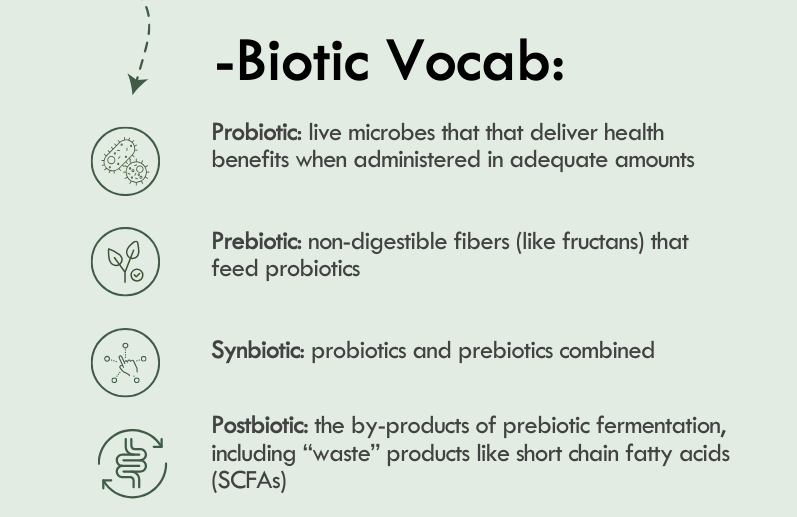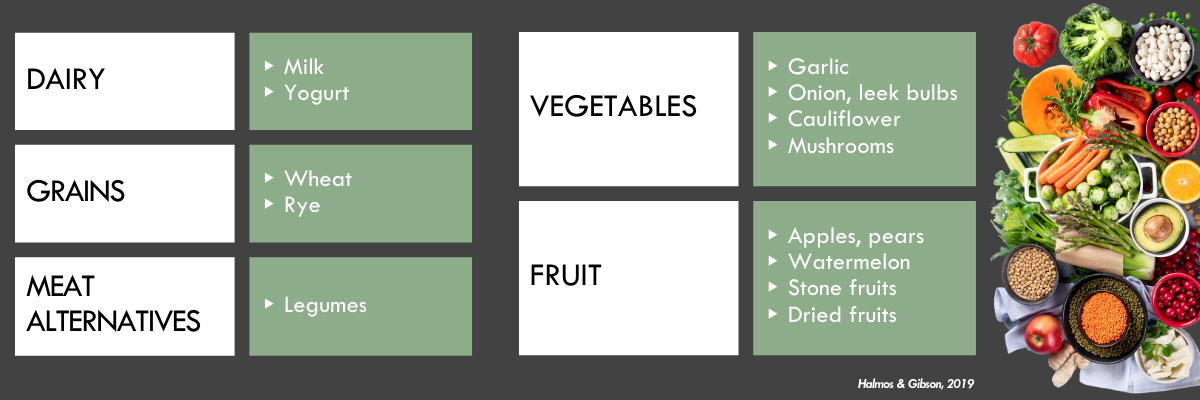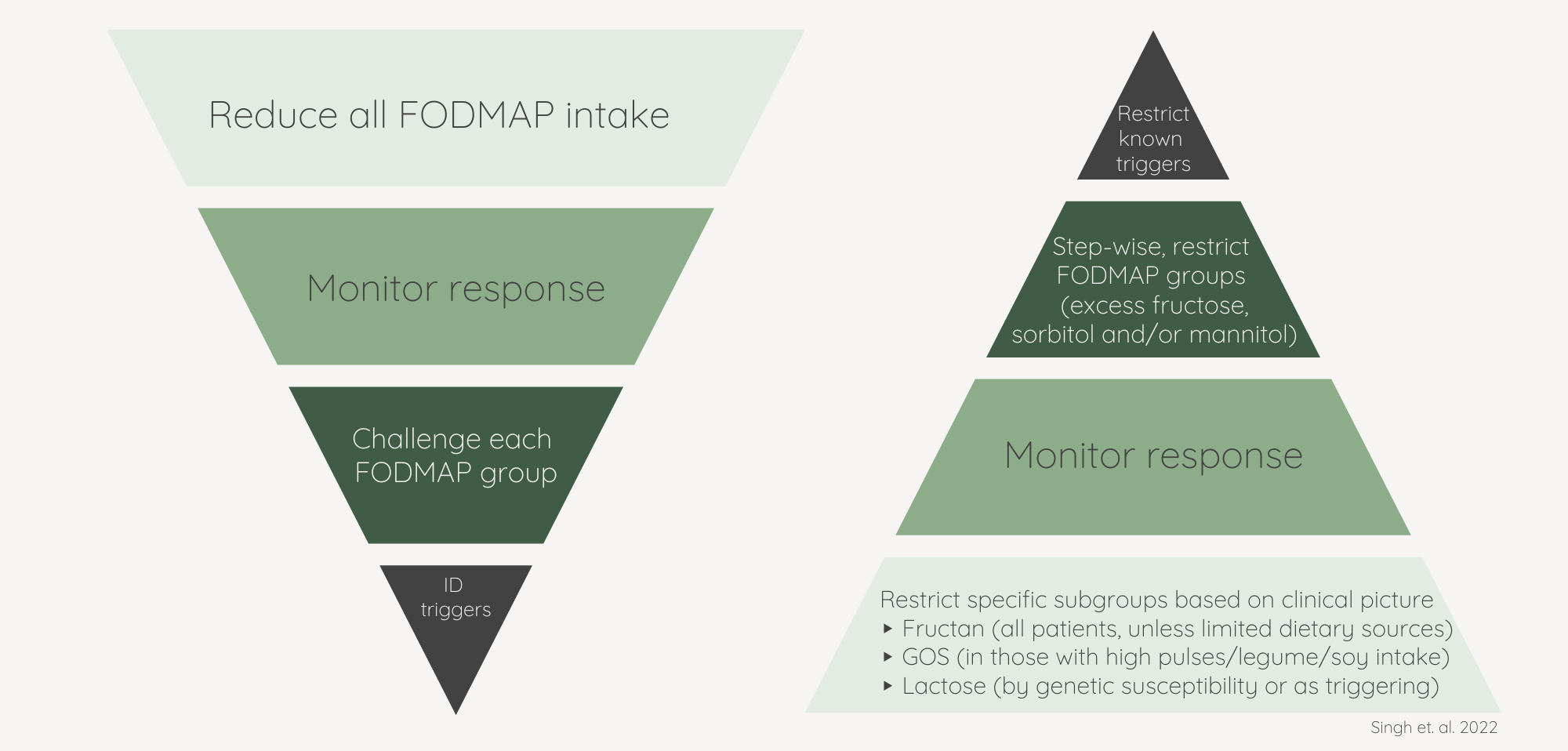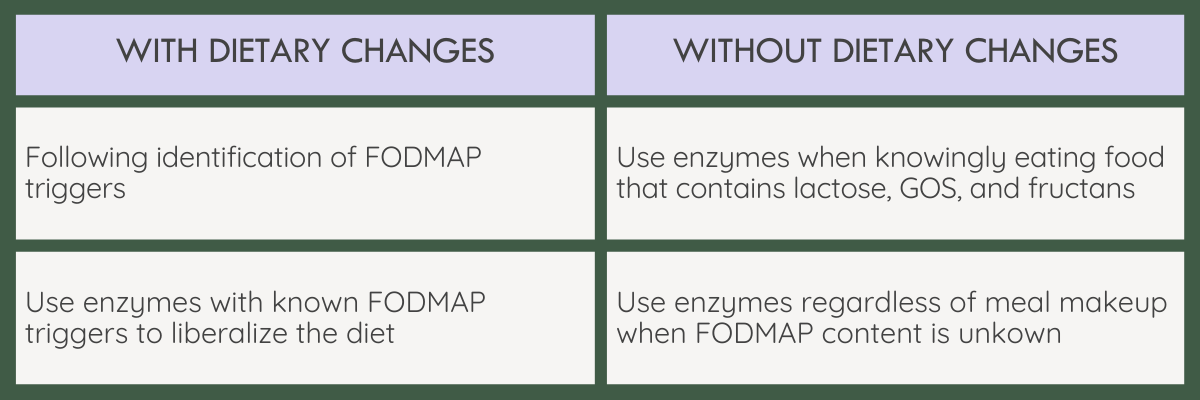Contraindications for the Low-FODMAP Diet
Applying the FODMAP Gentle Approach and "Cherry Picking"

Applying the FODMAP Gentle Approach and "Cherry Picking"
We know many patients are poor candidates for restrictive diets, such as those:
- With or at risk for disordered eating
- Children and the elderly
- At risk of malnutrition, underweight or malnourished
- Already following a restrictive diet
- With a comorbidity where diet change presents risk (ex. IBD, pregnancy)
- Who have trouble with food prep or reading labels
- Unwilling or with a poor ability to apply dietary change [1]

While the low FODMAP diet (LFD) is generally effective for symptom control in roughly 70% of adults with IBS, its restrictions have consequences. Even in the absence of a contraindication, a LFD diet puts everyone at risk for nutritional deficiencies, disordered eating, increased anxiety and decreased quality of life [3].
The FODMAP Gentle Approach
In 2019, researchers at Monash University started publishing recommendations for a “FODMAP gentle” approach for those with contraindications for the full LFD.
This targeted approach eliminates the most common FODMAP triggers without having patients go through the full three-phases of the LFD.
The FODMAP gentle approach is less restrictive and generally suitable for those with the contraindications above, though is still complex and should only be implemented under the guidance of an RD.
Foods to Restrict on the FODMAP Gentle

The FODMAP gentle approach uses a "bottom up" approach to identify trigger foods, rather than the traditional "top down" approach used in the LFD.
Top Down vs. Bottom Up

The "bottom up" approach starts with restriction of just known triggers and continues to exclude FODMAP categories as needed to improve symptoms.
Download our mini-guide to the FODMAP gentle approach to share with your team and educate on this alternative approach.
Non-Diet Strategies to Control Symptoms
Once patients have identified FODMAP triggers following the FODMAP gentle approach or through FODMAP swapping (aka "cherry picking," see page 9 of this resource for more guidance on swapping), digestive enzymes can help with reintroduction of FODMAP triggers.
Especially for those contraindicated for the LFD, non-diet interventions can offer symptom control without increasing risk for negative side effects of dietary restriction.
Using FODZYME Digestive Enzymes

Having experienced the struggles of elimination diets first-hand, we decided it was time for an approach that supports reintroduction of foods.
References
[1] Halmos EP, Gibson PR. Controversies and reality of the FODMAP diet for patients with irritable bowel syndrome. J Gastroenterol Hepatol. 2019;34(7):1134-1142. doi:10.1111/jgh.14650
[2] Wang X, Luscombe GM, Boyd C, Kellow J, Abraham S. Functional gastrointestinal disorders in eating disorder patients: altered distribution and predictors using ROME III compared to ROME II criteria. World J Gastroenterol. 2014;20(43):16293-16299. doi:10.3748/wjg.v20.i43.16293
[3] Simons M, Taft TH, Doerfler B, et al. Narrative review: Risk of eating disorders and nutritional deficiencies with dietary therapies for irritable bowel syndrome. Neurogastroenterol Motil. 2022;34(1):e14188. doi:10.1111/nmo.14188
[4] Singh P, Tuck C, Gibson PR, Chey WD. The Role of Food in the Treatment of Bowel Disorders:Focus on IrritableBowel Syndrome and Functional Constipation. Am J Gastroenterol. 2022Jun 1;117(6):947-957

